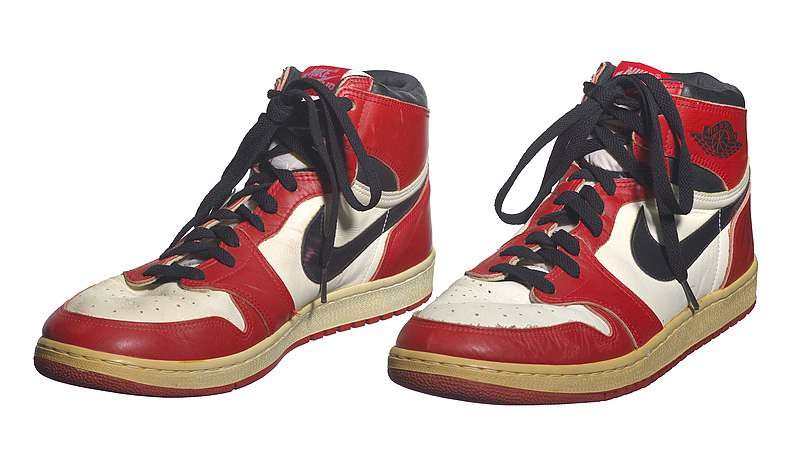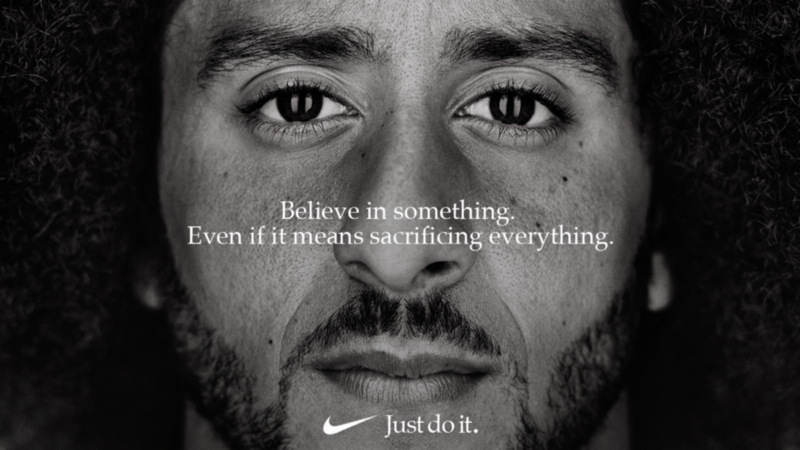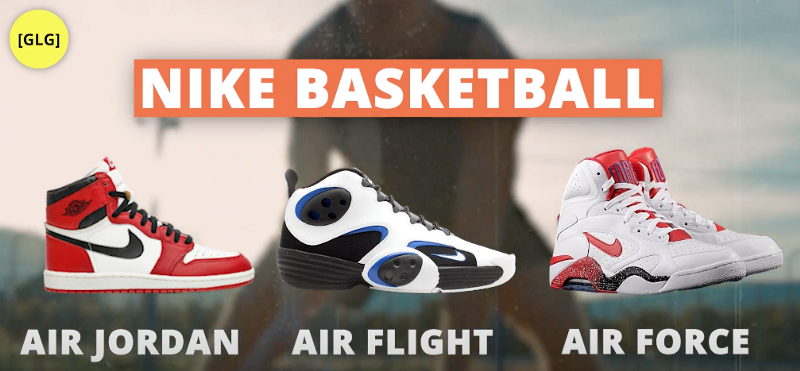Founded in 1964, Nike — originally called Blue Ribbon Sports — started with only $1200 in the bank. Now worth $38 billion, they are the undisputed kings of sportswear and control nearly 50% of the global athletic shoe market.
The rise of Nike is down to deeply understanding customers and — consciously or not — applying behavioral science and psychology to its experience. Here’s how it used science to grow from a tiny reseller to the world’s biggest shoe brand:
1. The Shoe Dog and the Mad Scientist
The story of Nike is really the story of two men — Phil Knight, its CEO, and Bill Bowerman, a legendary Olympic track coach.

Source: W David Marx on Twitter
Way before Nike existed, Bowerman was Phil Knight’s coach at the University of Oregon. Obsessed with experimentation, Bowerman constantly tinkered with the track team’s shoes to improve performance. And because he was a mediocre runner, Phi Knight’s feet became Bill Bowerman’s laboratory.
The two men became business partners in what eventually became Nike. They started as resellers for Onitsuka Tiger brand shoes, imported from Japan, but eventually created their own products. As a new business, their first goal was to establish trust with their customers.
Bowerman and Knight knew the best way to create trust was to get big-name runners to wear their shoes, taking advantage of something called Authority Bias.
What is Authority Bias?
This principle states that people tend to trust and be persuaded those in positions of power, like professors or experts in their fields.
Authority Bias: People tend to trust and be persuaded by those in positions of power, like professors or experts in their fields.
When professional runners wore Nikes — like the legendary long-distance runner Steven “Pre” Prefontaine — Knight and Bowerman knew it would make their shoes must-haves for amateurs and hobbyists.
Why?
Because amateur joggers would look at pros like Prefontaine as authorities on what brands to trust. Phil Knight even told Harvard Business Review that in the early days they didn’t do any marketing at all, and instead focused on what we’d now call influencer marketing. As Knight put it,
“We just tried to get our shoes on the feet of runners.”
2. Be Like Mike
In hindsight, it seems obvious that Michael Jordan would partner with Nike to create his signature shoe, the Air Jordan. But back in 1984, when he was shopping for a shoe partner, Nike was still focused on track and field shoes, and relatively tiny.

Air Jordan 1's; Source: Creative Commons via Wikimedia
Jordan first approached Converse, the home of the NBA’s biggest stars — people like Magic Johnson, Isiah Thomas, and Larry Bird. But Converse told Jordan he wouldn’t get as much attention as other players because, at the time, he wasn’t a big name.
Michael Jordan’s last choice for a shoe partner, one that he had to be convinced by his mother to even consider, was Nike. Eventually the Jordan brand would be worth more than $10 billion dollars.
But why did the brand take off?
Of course, Michael Jordan’s talent and stardom had a lot to do with it, but it’s also down to a psychology principle called the Halo Effect.
What is the Halo Effect?
This principle describes people’s tendency to let one positive trait guide their overall opinion of a person, product, or experience.
Halo Effect: People’s tendency to let one positive trait guide their overall opinion of something.
It’s why studies show that tall and attractive people make more money, are more popular with their peers, and get lighter prison sentences. Or, in this case, why celebrity-endorsed products result in more sales.
3. Nike’s Two-Word Marketing Plan
From the earliest days of “Just Do It” to the more recent Collin Kaepernick saga, Nike excels at marketing that doesn’t just appeal to our rational minds, but our emotions as well.

Source: Nike Print Ad
This approach sets them apart from most other athletic companies. While many other brands focus on product features or new technology in their ads, Nike links customers to its brand through the emotion of sport.
There’s science behind this approach — it uses a principle called Emotional Salience.
What is Emotional Salience?
When something is Emotionally Salient, meaning it arouses our emotions, we’re more likely to remember it. And when Nike creates Emotional Salience for customers, its products are more likely to be chosen over a competitor’s. Phil Knight put it this way:
“Our advertising tries to link consumers to the Nike brand through the emotions of sports and fitness. We show competition, determination, achievement, fun, and even the spiritual rewards of participating in those activities.”
That’s why Steve Jobs once said you could sum up Nike’s entire marketing strategy in only two words:
“No products.”
4. Slice Up the Market
When people think about Nike basketball, they usually think of Air Jordan. But did you know that there were actually three sub-brands in Nike basketball?
- Air Jordan
- Air Flight
- Air Force

Source: Created by the author, via Choice Hacking YouTube
Why? Well, there are lots of ways to play basketball.
Michael Jordan was known for the “air-like” style — big leaps over the heads of defensive players, lightning-fast and of course, his famous dunk. But eventually, after a dip in sales, Nike realized that not everyone played basketball like Michael Jordan.
Nike invented the Flight, a light and flexible shoe for faster play styles, represented by Scottie Pippen, and Force, a more solid shoe for aggressive play styles, represented by Charles Barkley. Phil Knight summed up the strategy this way:
“As we thought about it, we realized that there are different styles of playing basketball. Not every great player has the style of Michael Jordan, and if we tried to make Air Jordan appeal to everyone, it would lose its meaning. We had to slice up basketball itself.”
Nike found that they had to break their big brand — Nike basketball — into smaller sub-brands to make it easier for customers to know what products they’d prefer.
The psychology behind this is something called Chunking.

What is Chunking?
This principle says that peoples’ brains break down big sets of information into smaller chunks. It then rearranges these into groups that have meaning and helps them more easily make a decision.
Chunking: Our brains like information that’s broken down into small, easy to understand chunks.
That’s why breaking all Nike basketball down into Air Jordans, Flight, and Force worked. The categories were easy for customers to understand. It made each sub-brand more meaningful because Force, Flight, and Air were for different people, and Nike sent a clear message about what made each shoe special.
The Bottom Line
Nike knows, and acts on, what few other brands do — that focusing on what motivates customers can drive massive growth.
Although Nike might be savvy in applying psychology and behavorial science, they don’t just “nudge” customers. They use these principles in a way that drives short term sales conversions and long-term brand growth, and know that their real competition isn’t other brands, but themselves.
As Phil Knight put it,
“Beating the competition is relatively easy. Beating yourself is a never-ending commitment.”
If you enjoyed this article, check out my podcast episode about Nike:

